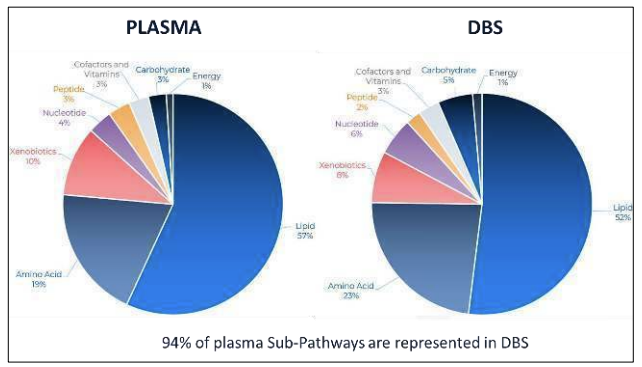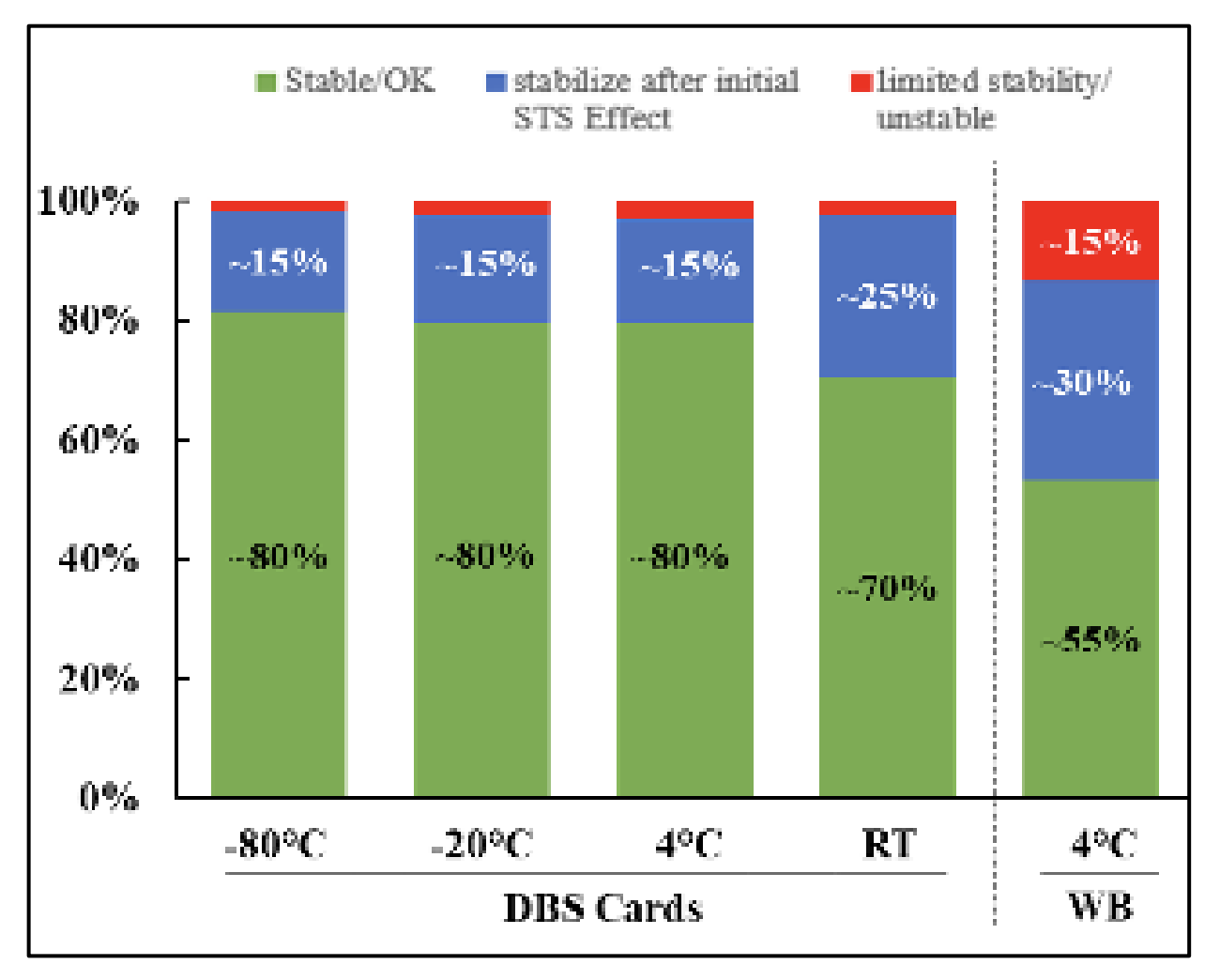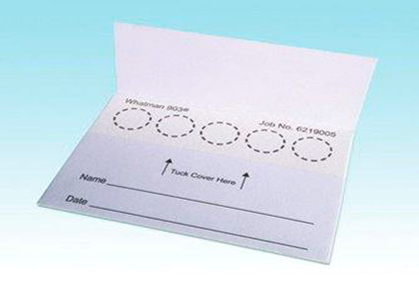Sample Collection | Whatman
Whatman Dried Blood Spot Cards from Millipore Sigma, Validated by Metabolon
Whatman 903 cards are well-established in clinical testing (newborn screening) and are easy-to-use and amenable to both at-home collection and easy laboratory handling. The use of dried blood spot (DBS) cards as a blood sampling technique is well suited for situations where the ultra-cold storage conditions (i.e., dry ice or refrigeration) necessary for plasma or serum are unachievable. They are also a viable alternative to in-clinic visits as they can be reliably prepared in an at-home, patient-driven collection process. Additionally, DBS cards are well suited for dealing with limited sample volumes and are a less invasive method, making longitudinal and pharmacokinetic studies requiring frequent collections more tenable.

Figure 1. Metabolomic profiles of plasma and DBS broken down by Super pathway, for biochemicals detected in at least 70% of samples from each matrix in a cohort of 49 donors.
Sensitivity and Precision of Whatman Dried Blood Spot Cards
As a direct comparison, we tabulated the numbers of named biochemicals that were detected in in each set of samples (DBS and plasma). Figure 1 illustrates the similarity in Super Pathway composition between plasma and DBS samples. We recognize that DBS cards (whole blood) and plasma are different matrices, and direct comparison between them is not recommended. However, even with these inherent differences, our data supports the conclusion that metabolomic profiles are similar between plasma and DBS, and that known metabolic signatures detected in plasma are maintained in DBS samples. For more information, download our whitepaper.
Stability of Whatman Dried Blood Spot Cards
The short-term stability (STS) of metabolites in dried blood spots was assessed using a set of DBS cards prepared in bulk from a single pool of whole blood (WB) for up to 28 days. Long-term stability (LTS) was assessed in 17 lots of DBS cards (25 µL spots of venous disodium EDTA blood) that were stored for up to 7 months at RT and -20°C, and analyzed after the initial preparation (T0), at 3 months, and at 7 months. Around 95% of compounds are stable or stabilize by the third week of storage regardless of temperature. Read our whitepaper for more details.

Figure 2. Proportion of biochemicals at each temperature assigned to each stability category in short term stability. Green indicates stability across days 1-28, blue indicates stability after 12-21 days of storage, and red indicates limited or no stability over the 28-day storage period. RT, room temperature; WB, liquid whole blood. STS, short term stability effect.

Robustness of Whatman Dried Blood Spot Cards
One key difference between DBS cards in comparison to plasma or serum is the inclusion of the cell component of whole blood (i.e., hematocrit; HCT). Under normal circumstances, these will comprise ~35-50% of total volume in adults.1,2 The range of red blood cell proportion in a standard DBS punch being profiled using metabolomics is potentially large, and differences in HCT can affect DBS in multiple ways. Metabolon has validated the use of Whatman 903 cards as a viable matrix for global untargeted metabolomics using our Global Discovery Panel. Multiple variables were evaluated to determine the limits and risks of DBS assays including spot volume, punch location, HCT, and ambient shipping in high-heat/humidity conditions. With well-designed studies, the effect of these variables can be minimized. For more information, download our whitepaper.
Detection of Metabolic Signatures in Dried Blood Spot Cards
In comparing plasma and DBS cards it is important to ensure that known metabolic signatures from plasma are reliably detected in DBS. Our biological validation experiments indicated that DBS samples maintain fed vs fasted metabolic (Figure 3) and allow for the detection of common markers of diabetes as well as specific dietary intake, stress and other lifestyle markers, underscoring the value of DBS in metabolism research.

Figure 3. Levels of the stress marker ophthalmate and ketone body 3-hydroxybutyrate (BHBA) during a 4-day water-only fast show the precision and maintenance of metabolic signatures within individuals over time using DBS cards.
References
1. Mondal, H. and D.P. Budh, Hematocrit, in StatPearls. 2021, StatPearls Publishing: Treasure Island (FL).
2. Billett, H.H., Hemoglobin and Hematocrit, in Clinical Methods: The History, Physical, and Laboratory Examinations, H.K. Walker, W.D. Hall, and J.W. Hurst, Editors. 1990, Butterworths: Boston.
Contact Us
Talk with an expert
Request a quote for our services, get more information on sample types and handling procedures, request a letter of support, or submit a question about how metabolomics can advance your research.
Corporate Headquarters
617 Davis Drive, Suite 100
Morrisville, NC 27560
Mailing Address:
P.O. Box 110407
Research Triangle Park, NC 27709

